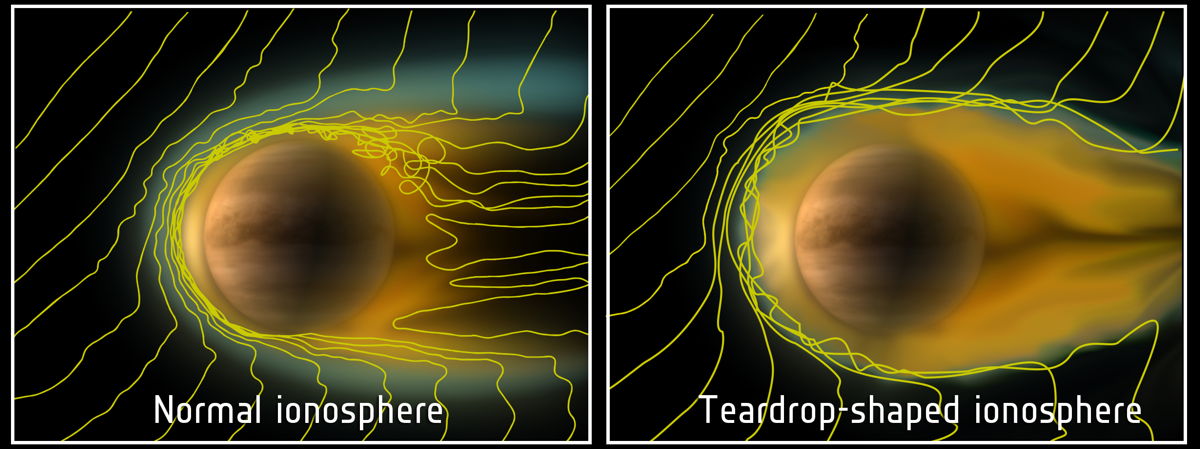Venus Can Have 'Comet-Like' Atmosphere

The planet Venus sometimes looks less like a planet and more like a comet, scientists say.
Scientists with the European Space Agency have discovered that a part of the upper atmosphere of Venus — its ionosphere — acts surprisingly different depending on daily changes in the sun's weather. The side of Venus' ionosphere that faces away from the sun can billow outward like the tail of a comet, while the side facing the star remains tightly compacted, researchers said.
The discovery was made using ESA's Venus Express spacecraft, which observed Venus's ionosphere during a period of low solar wind in 2010 to see exactly how the sun affects the way the planet's atmosphere functions. In 2013, the sun is expected to reach the peak of its 11-year solar activity cycle.
"As this significantly reduced solar wind hit Venus, Venus Express saw the planet’s ionosphere balloon outwards on the planet’s ‘downwind’ nightside, much like the shape of the ion tail seen streaming from a comet under similar conditions," ESA officials said in a statement today (Jan. 29).
It only takes 30 to 60 minutes for the planet's comet-like tail to form after the solar wind dies down. Researchers observed the ionosphere stretch to at least 7,521 miles (12,104 kilometers) from the planet, said Yong Wei, a scientist at the Max Planck Institute in Katlenburg, Germany who worked on this research.
Earth's ionosphere never becomes comet-like largely because the planet has its own magnetic field that balances out the sun's influence on the way the atmospheric layer is shaped. Venus, however, doesn't have its own magnetic field and is therefore subject to the whims of the sun's solar wind.
Researchers think that Mars behaves in much the same way. The Red Planet doesn't have a magnetic field to mitigate the influence of the sun's wind either.
Get the Space.com Newsletter
Breaking space news, the latest updates on rocket launches, skywatching events and more!
The Venus Express spacecraft launched in 2005 and has been orbiting the second planet from the sun since 2006. The spacecraft is equipped with seven instruments to study the atmosphere and surface of Venus in extreme detail. The spacecraft is currently in an extended mission slated to last until 2014 .
Follow Miriam Kramer on Twitter @mirikramer or SPACE.com @Spacedotcom. We're also on Facebook & Google+.
Join our Space Forums to keep talking space on the latest missions, night sky and more! And if you have a news tip, correction or comment, let us know at: community@space.com.

Miriam Kramer joined Space.com as a Staff Writer in December 2012. Since then, she has floated in weightlessness on a zero-gravity flight, felt the pull of 4-Gs in a trainer aircraft and watched rockets soar into space from Florida and Virginia. She also served as Space.com's lead space entertainment reporter, and enjoys all aspects of space news, astronomy and commercial spaceflight. Miriam has also presented space stories during live interviews with Fox News and other TV and radio outlets. She originally hails from Knoxville, Tennessee where she and her family would take trips to dark spots on the outskirts of town to watch meteor showers every year. She loves to travel and one day hopes to see the northern lights in person. Miriam is currently a space reporter with Axios, writing the Axios Space newsletter. You can follow Miriam on Twitter.